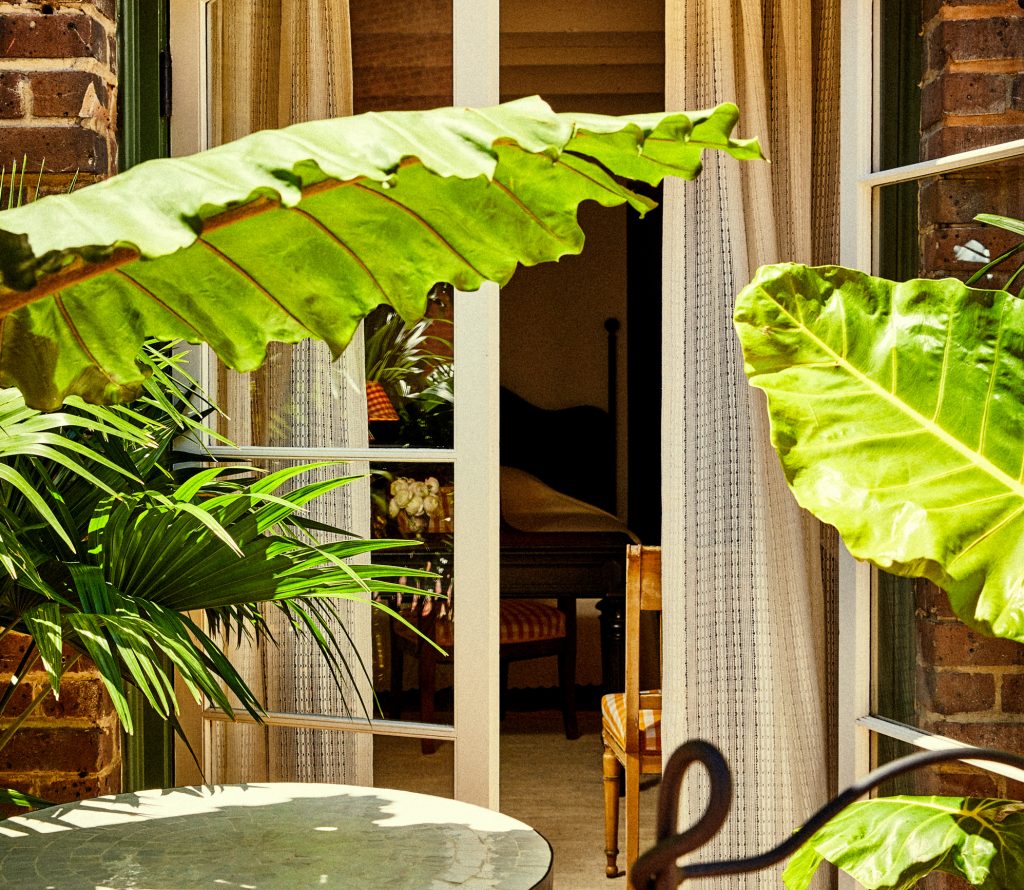New Orleans’ Rum-Centric Bar, Cane & Table
Bartender Nick Detrich shares insights on tiki culture and a recipe for the Two Palms
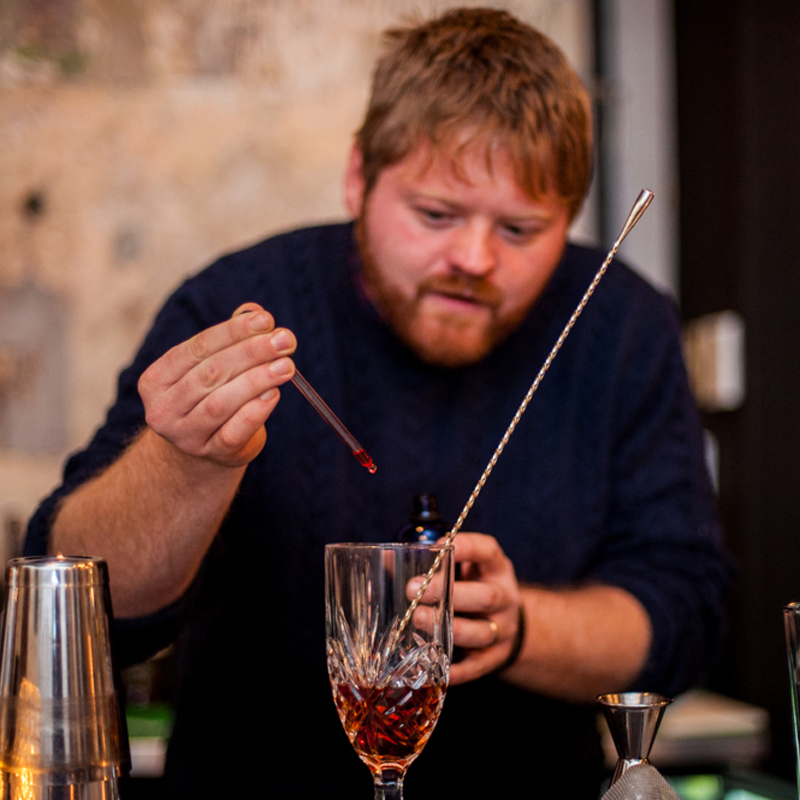
by Kate Beard
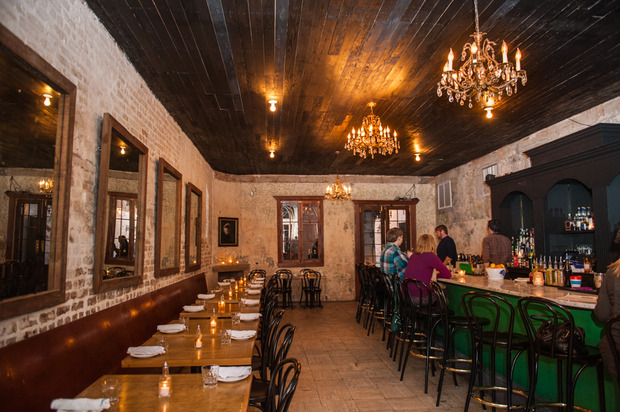
Since opening last July,
Cane & Table in New Orleans’ French Quarter has garnered a lot of attention, cementing its place on the list of the city’s best bars. And with its pedigree, it’s no wonder. The brainchild of Nick Detrich, who dreamed of opening his own rum-centric bar concept, Cane & Table is backed by Kirk Steinopal and Neal Bodenheimer, the team behind New Orleans cocktail keystones Cure and Bellocq.
For a few months after acquiring the space on Decatur Street—formerly known as Pravda—they operated their own pop-up called Perestroika@Pravda, which Detrich says went very much by a “fly by the seat of your pants” ethos. They changed the cocktail menu nearly every day, experimenting and refining concepts. After closing for a short while to let local interior designer and renovator Matt Kohnke create the new space, they finally made the full change to Cane & Table before the beloved Tales of the Cocktail festival. When visiting the venue, we spoke with Detrich who shared his extensive knowledge of rum and tiki history, as well as his thoughts on the scene in New Orleans.
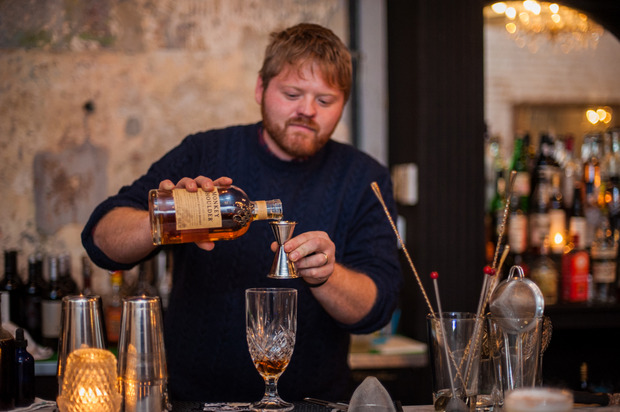
How did the concept for Cane & Table come out of your love of all things to do with rum?
Initially, what I had set out to open three years ago was a pretty classic mid-century tiki bar. But my interest in history of rum, the placement of New Orleans in the development of drinking culture in the Caribbean, as well as the development of rum culture worldwide, all changed the course of the concept. It came to focus on the 500-year history of drinking in the Caribbean that influenced the tiki movement, which I dubbed “proto-tiki,” and how New Orleans fit into that scheme. We draw inspiration from every island and nation that produces rum, as far as our food and drinks go. We also kind of look at how that development led to the tiki movement.
Was New Orleans important to rum culture?
New Orleans was an active port from early on. Actually, where Cane & Table is situated was the first red-light district of New Orleans. It was the sort of place where you had a lot of shore leave activity with sailors in the 18th century (and some even in the 17th century)—you had a lot of rumbustions stalking the streets at that point. You also had a lot of different cultures verging on New Orleans which are reflected in the drinking culture here. We focused primarily on the Spanish influence just because it had such a wide area of influence on the Caribbean and kind of came into New Orleans that way. But you also had important landmarks in rum culture happen in New Orleans as recently as the 1950s with the Hurricane. After the war, scotch was scarce, so you were made to buy a case of rum for every case of scotch you wanted to buy. An innovative bartender at Pat O’Briens came up with the Hurricane drink basically just to sell a lot of rum. Of course, it became a New Orleans icon.
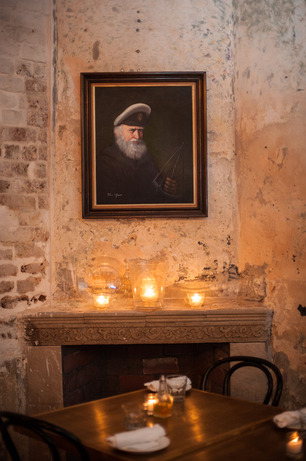
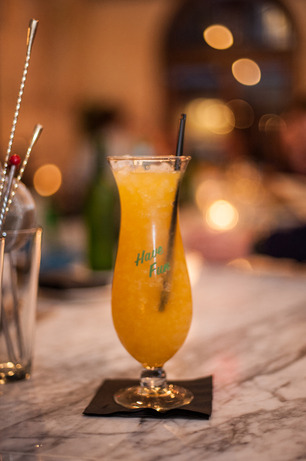
How did the tiki movement come out of rum culture?
Ernest Gantt, who is the founder of tiki, was actually from New Orleans. But he opened up his first tiki bar out in Hollywood in 1934. He was a proper handler in Hollywood before he opened up his bar—he traveled a great deal in Polynesia and the South Pacific, so he had all these little god totems and tikis that he would use to dress Hollywood sets. He opened Don’s Beachcomber Cafe the month after Prohibition ended. There was almost no whisky around because weren’t making whisky in America—there were some distilleries that had been making them for medicinal use only—and it took a while for some other things to catch on as far as importing goes. But they all had expensive importing fees… except rum. Rum was cheap and plentiful, so Gantt made big, boozy rum drinks served in big vessels, and decorated his pace with the totems and tikis—that’s how the tiki movement was founded. It ended up being the longest sustaining cocktail fad in all of history, from 1934 to the early 1980s.
That makes tiki seem really circumstantial—that Gantt happened to have been to Polynesia, happened to have lots of cheap rum and they got thrown together. Is that the case?
People started to become obsessed with these little tiki bars because they were an oasis in the middle of the suburban deserts. Tiki bars were designed to be an escape.
Maybe that’s how it started, but then people really latched on to it. It caught on on a national scale in the late 1940s. You had a lot of people coming back from the war and a lot of people leaving the cities for suburban developments. People started to become obsessed with these little tiki bars because they were an oasis in the middle of the suburban deserts. Tiki bars were designed to be an escape. A lot of them were in dimly lit buildings to create an atmosphere of perpetual twilight on an island somewhere. People really enjoyed it because it was pretty different to the stark, clean neighborhoods of the time.
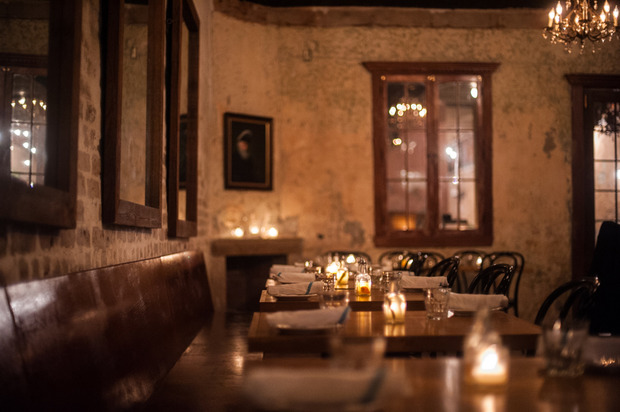
Do you think it also had something to do with escaping a more serious post-war world?
You definitely had a significant amount of GIs returning from the Pacific theater which is where a lot of the inspiration comes from. It offered people an escape. Bali Ha’i here in New Orleans was really good at doing it. They were in Pontchartrain Park on Lake Pontchartrain as part of an amusement park and they would offer people a literal escape. They would drive thatch-covered buses into town and pick you up. You’d get in the back of the bus and be handed a Mai Tai or a Fogcutter while they drove you to Bali Ha’i. You’d hang out on this island environment and drink excessively, then they’d put you on a bus and drive you back to town. It was very appealing. It wasn’t like a lot of the bars at the time, which are like a lot of bars now, just these dive bars or restaurant bars. It was a fun, raucous environment that you still see in a lot of suburban landscapes. It set the tone for a lot of American suburban dining, like T.G.I. Friday’s or Outback Steakhouse or Logan’s with the peanut shells on the floor; it was about making things big and more fun, creating a total experience rather than just a meal.

It seems that the New Orleans cocktail scene in general is not as po-faced as scenes in other big cities. Cane & Table in particular seems to be more playful and less serious – why is that?
That’s something that is definitely very “tiki”. Something I wanted to maintain with Cane & Table is an unpretentious style of restaurant or bar. It’s supposed to be loud and fun with goofy drinks served in goofy vessels like hollowed-out pineapples. And New Orleans as a whole is also very different to the rest of the country.
A lot of the guys here are pretty old school, and we have a lot of people to look up to. We have Chris Hannah [of Arnaud’s French 75], Chris McMillan [of Museum of the American Cocktail/Kingfish], Paul Gustings [of Broussard’s]. You know, these older guys who have been dong it for a while. They’re more interested in the experience than they are in the cocktail, which is really what it should be about. They’re very good at educating New Orleans bartenders in the ways in which they should carry themselves. You are there to enhance your guests’ experience, not just through what they’re drinking but also through making sure they’re having a good time and making sure they’re comfortable, et cetera. And that’s something that’s a very New Orleans thing.
What are your favourite drinks on the menu?
What has become a Cane & Table favorite is the Boss Colada, which is fresh pineapple and lime, orgeat, rum, and Bäska Snaps. It’s a long, bitter, tropical, refreshing drink that’s really, really delicious. There’s another one we’re making right now with madeira. Like rum, madeira has a long heritage as far as trade with the “new world” goes. It was discovered accidentally when a Spanish ship came back with Canary Island wine and through that ageing process had turned into madeira. The drink we’re making has madeira, our house-made falernum (which is a Caribbean cordial with a lot of lime), clove and anise notes, and Bittermens mole bitters. It’s a little bit like a madeira cobbler in a sense—it’s a really delicious, refreshing cocktail with a note of a spice to it as well.
The great thing about Cane & Table is that it’s just a bunch of nerds behind a bar.
The food and drinks menu at Cane & Table changes every so often. Do you get worried that the history of rum and Tiki will have enough to keep inspiring you for a while yet?
Not at all. There are always new things coming in and several ideas we’re working on. There are new rums coming out constantly; we draw a lot from Spain as well. I just got a really interesting sloe berry and anise liqueur from Basque. We’ve been playing around with this natural cider from Basque in cocktails—it’s super crisp and acidic, like an apple lemonade that has a bit of effervescence to it. And you know, the great thing about Cane & Table is that it’s just a bunch of nerds behind a bar. We’re always tinkering around and there’s always a project that someone is working on, trying to incorporate interesting flavors together. It will inevitably lead another bartender to start playing with it as well, and things will bounce around from bartender to bartender and develop in that way. The atmosphere we’ve tried to curate here, and of course New Orleans as a whole, will definitely help with inspiration.
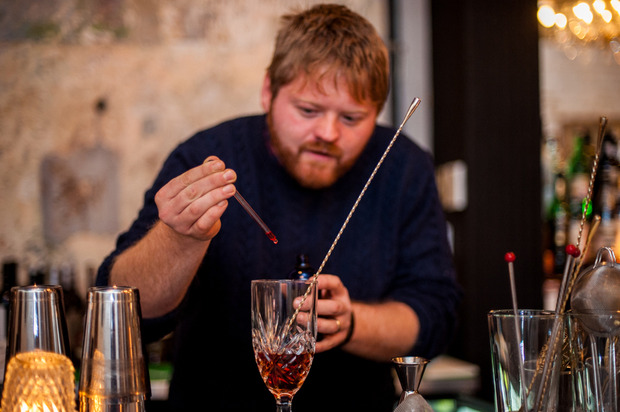
Nick Detrich shared a recipe for a smooth, refreshing, but not overly sweet cocktail called the Two Palms, perfect for quenching your thirst on a muggy New Orleans day.
Two Palms
1 oz London dry gin
½ oz 1:1 simple syrup
½ oz fresh lime juice
1 egg white
1 oz fresh coconut water
freshly grated nutmeg
Combine the gin, syrup, lime juice, and egg white in a shaker. Dry shake these ingredients without ice; then add ice and do a hard shake. Strain into a coupe glass. Add coconut water and grate fresh nutmeg over the top.
Cane & Table is located at 1113 Decatur Street, French Quarter, New Orleans
Photos by Kate Beard


